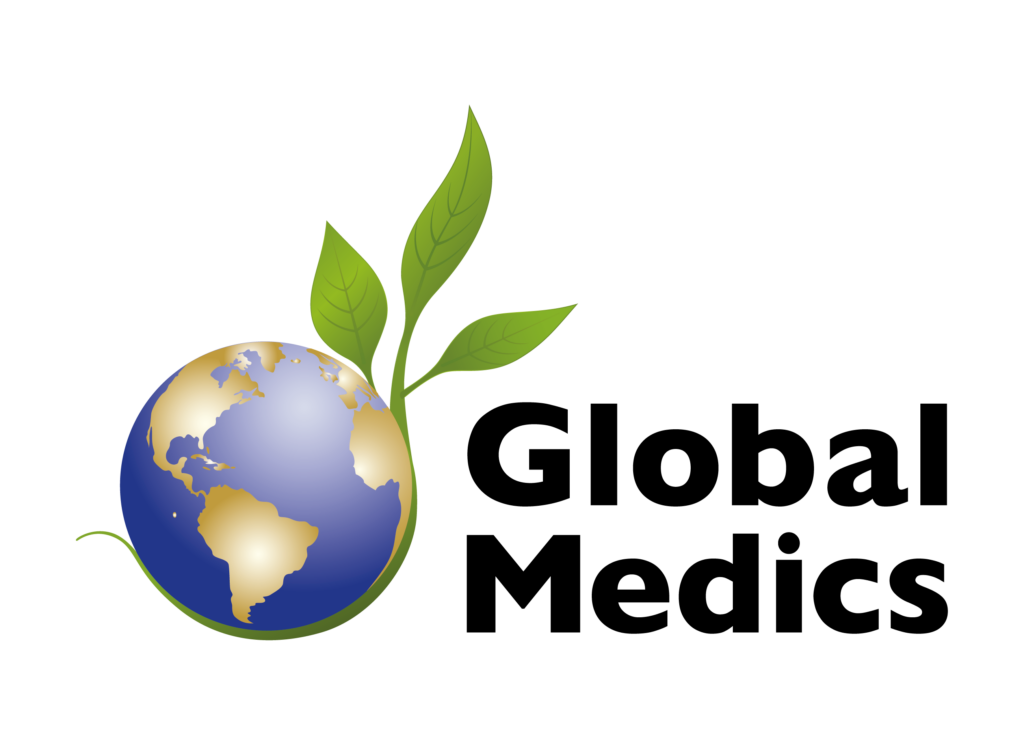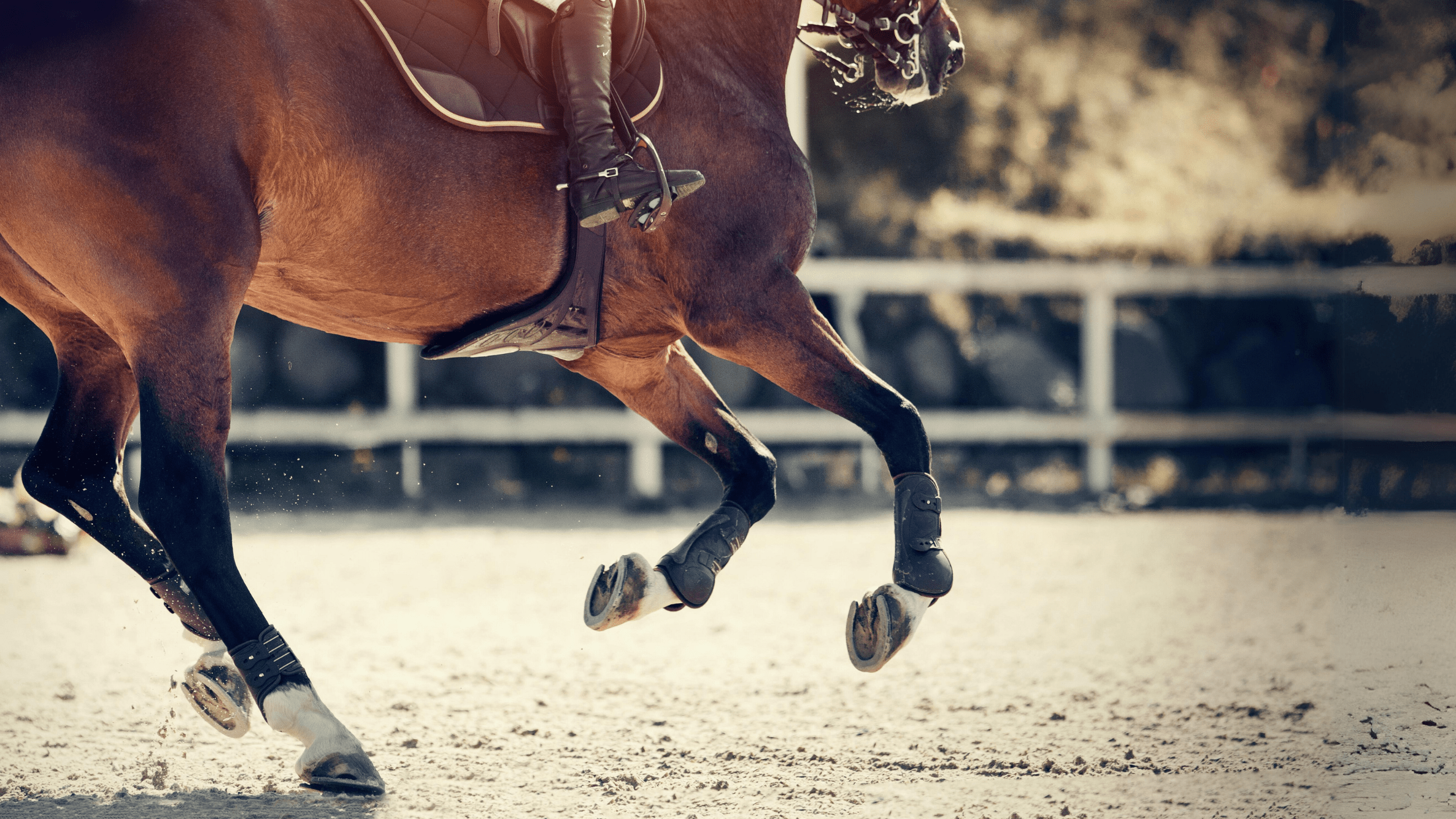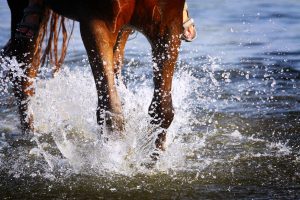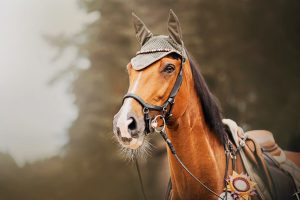Osteochondrosis dissecans, better known as OCD, is a common problem in (sport) horses. The condition occurs in growing horses, with bone and cartilage fragments forming in the joint. It is one of the most common orthopedic problems occurring in as many as 30% of young horses.
What does OCD mean?
You can split osteochondrosis dissecans into 3 parts:
- Osteo = bone
- Chondro = cartilage
- Dissecans = detaching
Together, these 3 words explain what OCD is exactly: the detachment of small pieces of cartilage from the bone.
How is OCD formed?
As a fetus, a horse's skeleton consists entirely of cartilage. As the fetus develops, the cartilage converts to bone, which is also called ossification. The cartilage that is ossified has a very good blood flow. But if there is an error in this blood flow, cartilage fragments can die and become detached.
The influence of genetics on OCD
OCD often occurs systematically in the same place, mainly in the hock, ball and knee. Possibly genetically, the blood vessels here are misplaced, leading to poor blood flow and thus the degeneration of cartilage.
Your horse's size and growth rate can also play a role in the formation of OCD. If the foal is very "heavy" for its immature skeleton, the joints are going to be overloaded.
All of these genetic factors are beyond your control, so you cannot avoid them. On the other hand, there are also environmental factors that play a role in determining OCD, which you do can control.
The influence of nutrition on OCD
First of all nutrition also plays a big role in OCD. The final stage of ossification, and thus the last stage for possible formation of OCD, is between the ages of 2-7 months. During this period, however, foals are often prepared to go to auction. If you feed your horse feed rich in rapidly digestible carbohydrates and sugars at this time, his insulin is going to skyrocket. This affects the thyroid gland, which controls the metabolism of calcium and phosphorus, which can increase the risk of OCD .
Not only the nutrition of the foal, but also of the mare plays a crucial role. It is the same story as before: if you overfeed your mare in the last trimester of pregnancy, her insulin will go up and she will pass it on to the unborn foal.
You can also supplement your pregnant mare with certain substances to prevent the formation of OCD. The trace element copper can reduce change of OCD formation, so it is recommended to give your pregnant mare a cure of Mineron.
The influence of movement on OCD
Constant exercise has a stimulating effect on the health of your horse's cartilage. Therefore, it is recommended that you offer your foal plenty of pasture. But be careful, too much exercise is not good! Don't go putting your foal to work, as too much exercise can be harmful. This can cause overexertion, causing the joint to inflame and swell. In that case, more joint fluid of bad quality is going to be produced, so the cartilage is not properly nourished and may die.
How can I recognize OCD in my horse?
From the age of 18 months, there should be no X-ray changes. At this time, therefore, it is useful to have X-rays taken of your horse to see if he has OCD . However, if you notice earlier that your horse has a swollen joint or is limping, it is best to have an examination immediately.
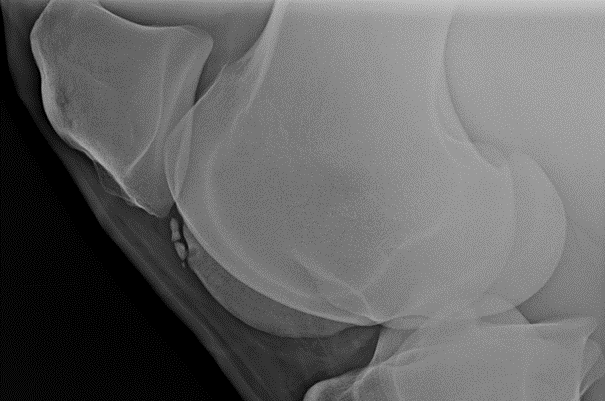
How is OCD treated?
If OCD is diagnosed in your horse, the loose particles can be removed during an arthroscopy. During this procedure the surgeon will enter the joint with a camera and remove the loose particles. Because this only requires a small incision, it will heal quickly.
Does every fragment have to be removed? You can compare it to when you have a pebble in your shoe: sometimes it's on the side and you don't feel anything, but sometimes it gets in the way and hurts with every step you take. Because you cannot predict in advance which fragments will cause problems, it is recommended that most fragments get removed preventively at a young age.
What are the consequences of OCD for my sport horse?
Horses can recover 100% and continue their sporting activities as usual, so OCD in sport horses certainly does not mean the end of their careers! After surgery, however, it is necessary to rebuild first. Your veterinarian can draw up a rehabilitation schedule, possibly in combination with the use of an aquatrainer or physical therapy.
Also, certain nutrients can support the body after arthroscopy, such as chondroitin, glucosamine and collagen. These substances can ensure that the joint will recover faster and better. This is why veterinarians recommend giving your horse a cure of Arti-Gold after surgery.
5 important facts about OCD
- OCD is a condition that develops in young horses during their first year of life
- At 18 months, radiographic screening is recommended
- It is recommended to remove loose fragments preventively at a young age
- In prevention, exercise and nutrition of mare and foal are important
- Support your horse after an arthroscopy with Arti-Gold
Read more about nutritional support for joints in our blog.
